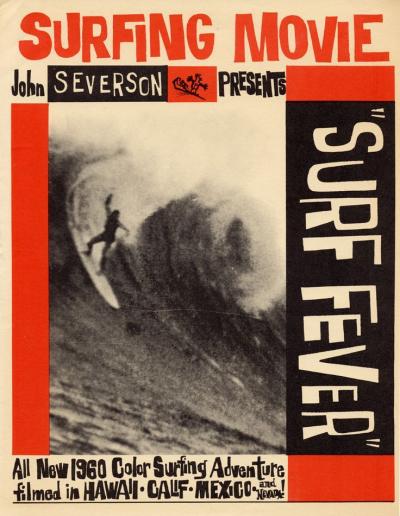Introduction to Adobe Stock and Its Features

Adobe Stock is a comprehensive stock photography platform that allows users to purchase high-quality images, videos, and templates for their creative projects. Launched in 2015, it integrates seamlessly with Adobe Creative Cloud applications, offering designers and marketers a streamlined workflow. Key features include a vast library of over 200 million assets, sophisticated search capabilities powered by Adobe Sensei AI, and flexible pricing options including subscription plans and on-demand purchases. This integration and extensive resource library position Adobe Stock as a vital tool in creative industries.
Overview of the Stock Photography Market

The stock photography market has evolved significantly over the years, influenced by technological advancements and shifting consumer needs. This sector encompasses a variety of platforms, from traditional agencies to innovative marketplaces. The market is primarily driven by demand from content creators, including designers, marketers, and businesses seeking visual content for various applications.
In recent years, the growth of digital marketing and social media has led to an increase in demand for high-quality images. Stock photography agencies have adapted to this by expanding their offerings, including user-generated content and niche collections. The rise of subscription-based models provides users with affordable access to vast libraries, fundamentally altering pricing strategies and market dynamics. As mobile technology and social media continue to flourish, stock photography providers must remain agile in their approaches.
Adobe Stock’s entry into this competitive landscape has further influenced market trends, encouraging competitors to enhance their services and adapt to changing consumer preferences. With its seamless integration into creative workflows and emphasis on quality, Adobe Stock sets a benchmark for user experience and asset availability in the stock photography market.
Market Trends Influenced by Adobe Stock

Adobe Stock has significantly reshaped the stock photography landscape since its launch. Its seamless integration with Adobe Creative Cloud has not only enhanced user experience but also sparked several key trends in the market:
- Subscription Models on the Rise: Adobe Stock popularized subscription services, leading many platforms to adopt similar models. This change makes high-quality images more accessible to a broader audience, from freelancers to large corporations.
- Focus on Quality Over Quantity: The emphasis on high-quality visuals in Adobe Stock sets a standard, encouraging competitors to elevate their own offerings. This drive for quality has led to a more curated selection that meets the needs of professional users.
- Increased Demand for Diverse Content: Adobe Stock advocates for inclusive representation, pushing artists and photographers to showcase a range of cultures and lifestyles. This shift is indeed paving the way for a more diverse portfolio in stock collections across platforms.
- AI and Technology Integration: With Adobe’s focus on innovation, the integration of AI tools like Adobe Sensei into stock photography has influenced how images are categorized and searched. This trend is encouraging others to adopt similar technologies for improved user experience.
- Collaboration with Creatives: Initiatives like the Adobe Stock Contributor Program enhance collaboration between professionals and designers, creating a community-driven approach to stock photography that other platforms are now seeking to replicate.
Overall, Adobe Stock’s influence is noteworthy, driving trends that prioritize accessibility, quality, diversity, and technology in a traditionally static market.
Comparison of Adobe Stock with Other Stock Photography Platforms

When comparing Adobe Stock to other stock photography platforms, several key factors emerge that can impact a user’s experience and decision-making process:
| Feature | Adobe Stock | Shutterstock | Getty Images | iStock |
|---|---|---|---|---|
| Integration with Creative Tools | Seamless integration with Adobe Creative Cloud | Limited integration with some design tools | No direct integration; standalone platform | Some integration with tools like Canva |
| Pricing Models | Offers flexible subscriptions and pay-per-image | Variety of subscription and credit-based models | Premium pricing with some subscription options | Lower-cost subscription options available |
| Image Quality | High-quality curated content | Wide range but varies in quality | Generally premium quality | Good quality, but often less diverse |
| Collection Diversity | Inclusive and diverse collections | Diverse content but less focus on inclusion | Strong offerings in editorial and historical images | Some diversity, focused on specific niches |
| User Experience | Intuitive and user-friendly | Comprehensive but can be overwhelming | Professional but less user-friendly | Simplified and accessible |
In summary, Adobe Stock stands out for its integration with Creative Cloud, commitment to quality, and focus on diversity, making it a compelling option for many users. Depending on specific needs—be it cost, quality, or type of imagery—different platforms may appeal to different audiences. Ultimately, the choice of stock photography platform often comes down to personal preference and project requirements.
The Future of Stock Photography in the Wake of Adobe Stock
As we look ahead, it’s evident that Adobe Stock has significantly altered the landscape of the stock photography market. With its seamless integration into Adobe Creative Cloud, the platform has made stock images and videos more accessible than ever before. Here are a few trends to watch for in the future of stock photography:
- Increased Competition: As Adobe Stock continues to grow, other platforms will feel the pressure to innovate. This could mean better pricing models, improved quality control, or enhanced user experiences.
- Emerging Technologies: Expect to see advancements such as AI-driven image recognition and enhanced search functionalities. These technologies will help users find the perfect image more quickly and efficiently than ever before.
- Diverse Content Needs: As businesses embrace more diverse and inclusive content, stock photo libraries will also need to expand. This shift may lead to a greater focus on authenticity and representation in visual content.
- Quality Over Quantity: With an abundance of stock images available, buyers are likely to prioritize quality. Creators will need to adapt by improving the craftsmanship of their work.
- Collaborations and Partnerships: Adobe’s existing ecosystem will foster collaborations. Creators, brands, and agencies may increasingly join forces to produce unique, bespoke stock content.
Overall, the future of stock photography is bright, driven by innovation and creativity. Those who adapt to these changes will thrive in this evolving marketplace.
Tips for Creators to Succeed on Adobe Stock
Are you a creator looking to make your mark on Adobe Stock? Here are some essential tips to help you succeed:
- Understand the Market: Do some research to see what kind of content is trending. This can help you produce images that meet current demands.
- Optimize Your Metadata: Accurate and detailed keywords, titles, and descriptions are crucial. They help your work appear in search results, making it easier for potential buyers to find your images.
- Focus on Quality: Invest in good equipment and editing software. High-resolution images with professional composition will stand out and attract more buyers.
- Diversify Your Portfolio: Create a variety of content, from lifestyle photography to abstract images. A broader portfolio increases your chances of getting sales across different niches.
- Engage with the Community: Join forums and groups related to Adobe Stock. Networking with other creators can provide valuable insights and support.
- Stay Updated: Keep an eye on Adobe updates and trends in the stock photography market. This knowledge will allow you to adapt and flourish in this fast-paced environment.
By following these tips and consistently producing high-quality content, you can maximize your success on Adobe Stock and carve a niche for yourself in the stock photography market.
The Impact of Adobe Stock on the Stock Photography Market
Adobe Stock, launched in 2015, has significantly transformed the stock photography landscape, reshaping how creators, businesses, and marketers access high-quality visual content. As a subsidiary of Adobe Inc., it integrates seamlessly with industry-standard software like Photoshop and Illustrator, providing a streamlined experience for users.
Here are some key impacts Adobe Stock has had on the stock photography market:
- Increased Accessibility: With a vast library containing millions of images, videos, and templates, Adobe Stock makes it easier for users across various skill levels to find suitable content.
- Improved Quality: Adobe Stock focuses on high-quality submissions, attracting top-tier photographers and artists, which elevates the overall standard in the market.
- Integration with Creative Suite: The ability to access stock images directly within Adobe Creative Cloud software simplifies the workflow for designers and creatives.
- Flexible Pricing Models: Adobe Stock offers various subscription plans, catering to freelancers, small businesses, and large enterprises, making it more accessible to diverse customers.
- Enhanced Contributor Opportunities: Photographers and artists can showcase their work and earn income through Adobe Stock’s contributor program, expanding their reach to a global audience.
Competitors have also felt the pressure to innovate and improve their offerings in response to Adobe Stock’s popularity, resulting in a more competitive environment within the market.
| Feature | Adobe Stock | Competitors |
|---|---|---|
| Library Size | Over 200 million assets | Varies by platform |
| Integration with Software | Seamless with Adobe Creative Cloud | Limited integration |
| Pricing | Flexible subscriptions at various levels | Varies widely |
| Contributor Earnings | Competitive percentages | Varies by platform |
Overall, Adobe Stock has revolutionized the stock photography market by enhancing accessibility, quality, and integration, leading to an ongoing evolution in how visual content is produced and consumed.
Conclusion: The Ongoing Evolution of Stock Photography
As Adobe Stock continues to innovate and expand its offerings, it plays a crucial role in shaping the future of stock photography, driving competition and creativity in a rapidly changing digital ecosystem.


